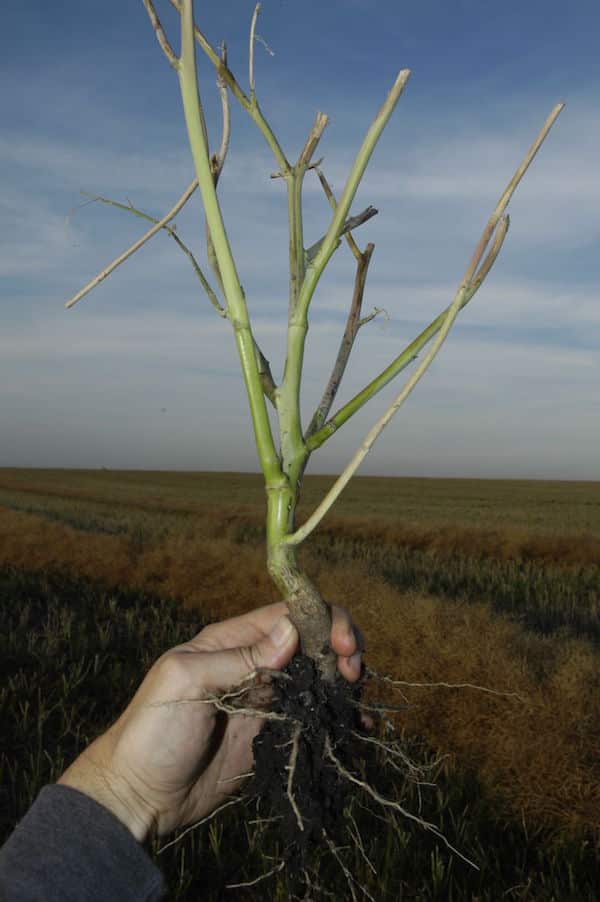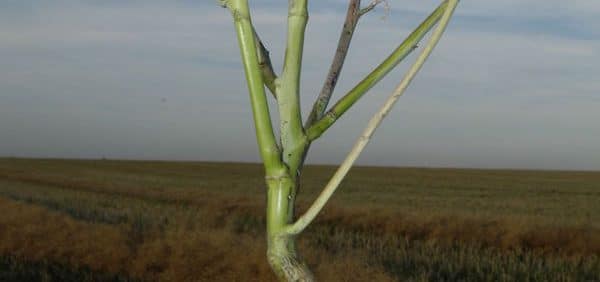After dry conditions through many parts of the Prairies in May and June, canola growers were fairly grim about prospects for the crop. Rain in July turned the year around for many of these dry regions. And oddly, it turned out that the worst looking crops in June produced some of the better yields by harvest time. Many growers, to their surprise, harvested their best yields on record.

In short, Brassica napus is semi-determinant in its growth, which means it can produce new growing points from leaf axils. When conditions change to provide more moisture, nutrients or heat, secondary and tertiary branch growth can extend flowering or even initiate secondary flowering. This can produce a significant increase in yield as long as fall conditions allow for maturation. The fall of 2016 did provide these conditions for many regions.
Thin crops provided the space for this branching to occur, while crops that were dense and uniform early in the season did not have this same opportunity.
Results for 2015 are not a reason to alter plant establishment goals for 2016. Best management practices continue to be seed depth, timing and rate that provides for a uniform vigorous stand with seven or more plants per square foot.
Watch this Canola School video with Murray Hartman: “Ignoring the outlier growing season”

